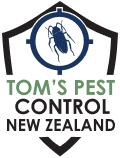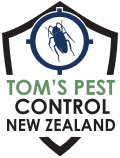Regarding reproduction, brown rats are notorious for their prolific breeding habits. Male and female rats can mate as early as three to four months old, with heightened activity during the summer months.
The reproduction process involves polygamy, meaning that males and females can mate with multiple partners. Remarkably, females can become receptive to mating again as soon as 18 hours after giving birth and can give birth to up to seven litres per year, each lasting 22 to 24 days.
The newborn rats stay in the nest and suckle for about three to four weeks before venturing. However, during this time, they can quickly become a severe problem. Brown rats are known for their ability to spread diseases such as leptospirosis and salmonella. They can also cause significant damage to property by gnawing through electrical wiring and wood.
Professional Norway Rat Control Services: Eradicate Infestations with Ease
Norway rats, often known as brown rats, are part of the rodent family and can grow up to 40 cm in length. Contrary to their name, these rodents are frequently found in urban areas throughout New Zealand and can rapidly become a major concern. If you suspect a Norway rat infestation, it is crucial to act promptly to prevent further damage. Tom’s Pest Control New Zealand recognises the problems posed by these pests and offers effective solutions to control and eliminate them.
Norway rats can cause structural damage to properties by gnawing on wood, electrical wires, and insulation. This not only compromises the integrity of buildings but also poses a potential fire hazard. Additionally, they contaminate food sources and surfaces with their droppings and urine, leading to unsanitary conditions and the potential spread of diseases.
By addressing Norway rat infestations, Tom’s Pest Control New Zealand helps property owners maintain a clean, safe, and comfortable environment. Our professional pest removal services aim to eradicate these rodents and prevent future infestations, ensuring the well-being of our clients and their surroundings.
Identifying a Brown Rat
Identifying brown rats can be tricky, but one distinguishing characteristic is their short and dense fur that covers their entire body except for their nose, tail, and ears. The fur colour can range from grey to brown, but typically they have lighter colouring on their underside. In addition, look for any droppings or gnaw marks indicating their presence. If you are still unsure and need further assistance, don’t hesitate to contact the professionals.
When it comes to food and shelter, Norway rats are incredibly adaptable creatures. They are opportunistic feeders, consuming various items, including human waste, farm crops, plants, lizards, chicks, and other rodents. This makes them particularly troublesome pests, as they can easily find food sources in rural and urban areas.
Norway rats typically reside in burrows beneath shrubs and sewer systems, and they are known for their impressive tunnel-building abilities. They construct complex networks of tunnels and build nests made from shredded materials. These nests protect them from predators and the elements. They can be found in various locations throughout urban areas along the coast.
In the wild, Norway rats typically live for two to three years. However, when kept as pets and cared for by humans, their lifespan can increase to four or five years.
Despite their relatively short lifespans, these rats can cause significant property damage and threaten human health due to their ability to spread disease.
It’s essential to take proactive measures to control Norway rat infestations, such as proper waste management and seeking professional rodent control services.
Detecting a Brown Rat Infestation
Detecting a brown rat infestation as soon as possible is crucial to prevent it from becoming a more significant problem. Here are some signs to look for:
-
- Faeces – Brown rat droppings are usually black and shiny, measuring between ¼ to ½ inch long. You may find them near food sources, water, and shelter.
- Footprints – Look for footprints and tail marks measuring around 3/4-1 inch, which may be visible on dusty surfaces or mud. Additionally, smudge marks from their oily fur may be on pipes, beams, and support pillars.
- Urine – The urine can be identified by its distinctive smell and appearance. Under ultraviolet light, it glows blue and white. Look for dry and wet urine stains near food sources or rat runways.
- Gnawing signs – The rats have powerful teeth and jaws, and they can cause significant damage to structures and materials. Look for new gnawing marks, which are rough, and older ones, which are smooth and greasy.
- Burrows – They create extensive networks of burrows under plant growth, building foundations, and near trash areas. Look for signs of digging or disturbances in the soil and holes in walls or foundations.
Managing Infestation of Norway Rats on Your Premises
The proliferation of Norway rats is rapid. Hence identifying and averting an invasion at an early stage is crucial. You can restrain their entry by blocking openings and crevices, fixing leakages to restrict their water supply, keeping food in airtight containers, and maintaining cleanliness.
Contact Tom’s Pest Control New Zealand immediately upon suspicion of an infestation of Norway rats on your premises. Our adept pest control specialists have the knowledge and proficiency to safely eradicate these rats from residential and commercial properties by employing modern methods and safe solutions.
Prevent Pests from Spoiling Your Day – Get in Touch Now!
Our primary objective is to assist you in eliminating these pests as quickly and efficiently as possible. Contact us to learn more about our Norway rat control services in New Zealand.
Frequently Asked Questions
Are Norway rats dangerous?
Norway rats can be dangerous as they can carry and transmit diseases to humans and animals through their urine, droppings, and bites. They can also cause damage to property by gnawing through wires, insulation, and structural materials.
How can I find Norway rat exterminators near me?
To find Norway rat exterminators near you, search online or consult your local directory. It is recommended to choose a reputable pest control company with experience in dealing with rodent infestations.
What is the difference between Norway rats and mice?
The main differences between Norway rats and mice are their size and behaviour. Norway rats are larger than mice and have brown or grey fur, whereas mice are smaller and have a variety of fur colours. In addition, Norway rats tend to burrow and build nests in underground tunnels. In contrast, mice typically build nests in elevated areas such as walls or attics.

